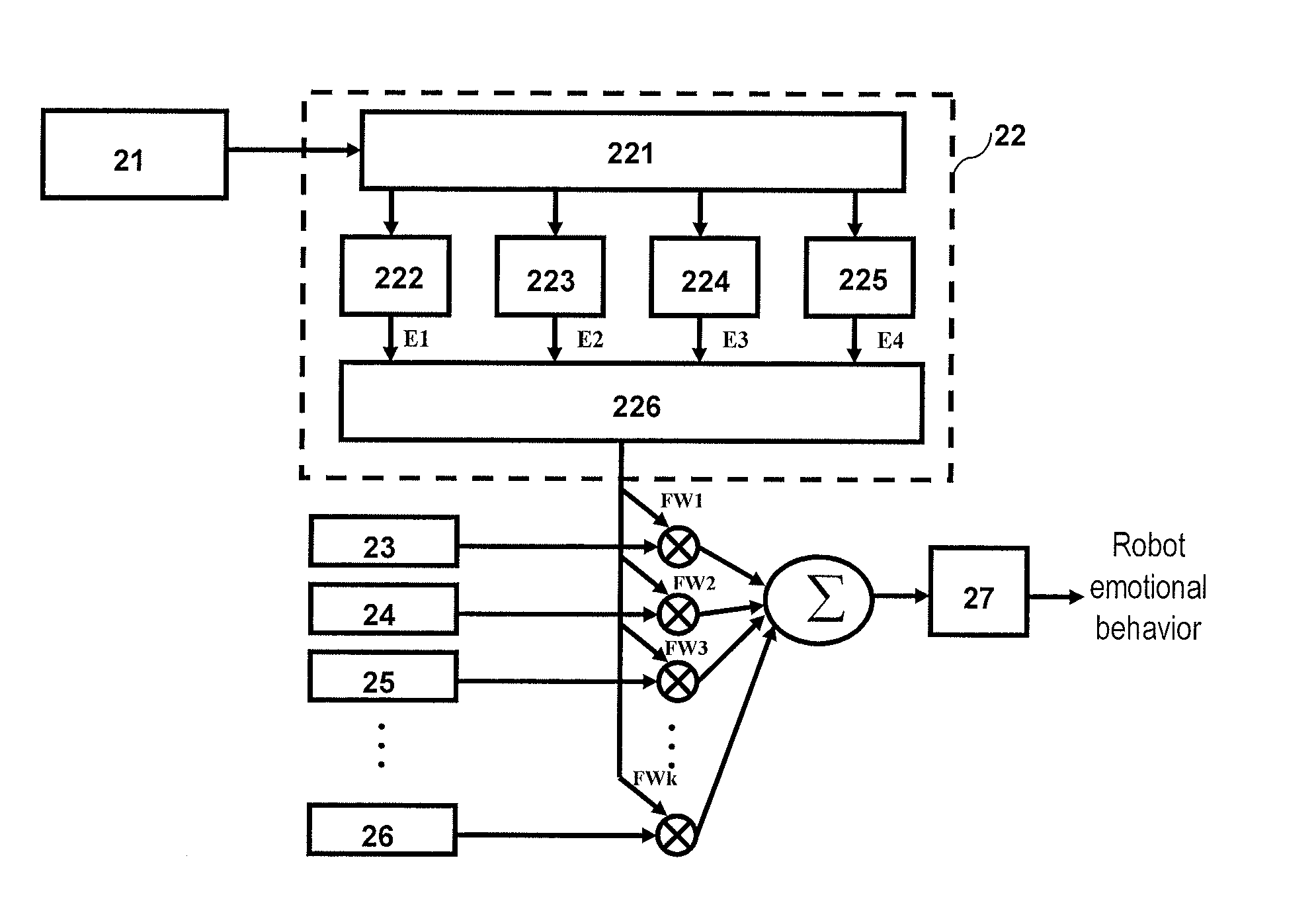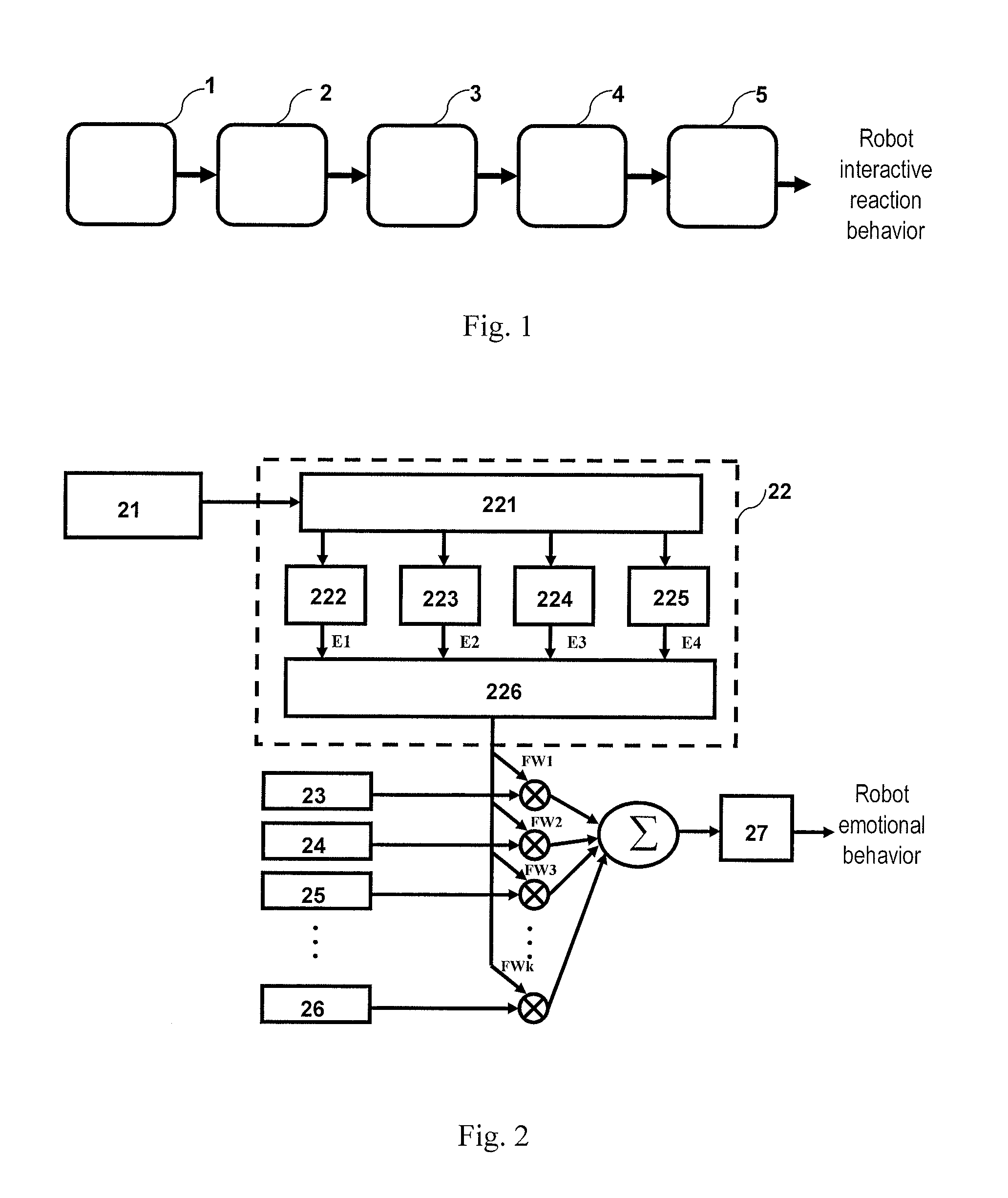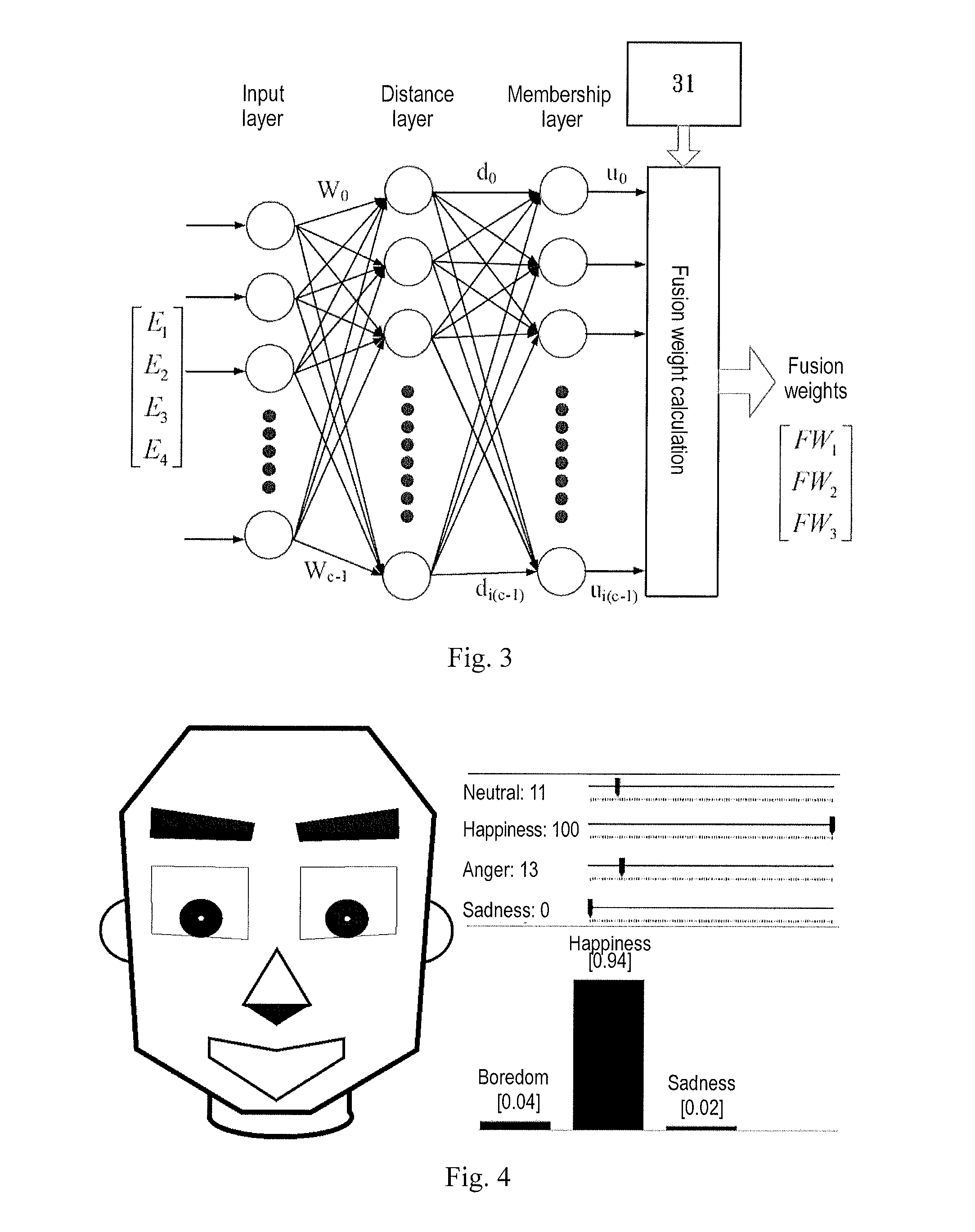Device and method for expressing robot autonomous emotions
a robot and emotion technology, applied in the field of devices and methods for expressing robot autonomous emotions, can solve the problems of lowering the interest and nature of human-robot interaction, difficult changes in different anthropomorphic personality characteristics,
- Summary
- Abstract
- Description
- Claims
- Application Information
AI Technical Summary
Benefits of technology
Problems solved by technology
Method used
Image
Examples
Embodiment Construction
[0032]The application of the present invention is not limited to the following description, drawings or details, such as exemplarily-described structures and arrangements. The present invention further has other embodiments and can be performed or carried out in various different ways. In addition, the phrases and terms used in the present invention are merely used for describing the objectives of the present invention, and should not be considered as limitations to the present invention.
[0033]In the following embodiments, assume that two different characters (optimism and pessimism) are realized on a computer-simulated robot, and assume that a user has four different levels of emotional variations (neutral, happiness, sadness and anger) while a robot is designed to have four kinds of expression behavior outputs (boredom, happiness, sadness and surprise). Through a computer simulation, an emotional reaction method of the present invention can calculate the weights of four different ...
PUM
 Login to View More
Login to View More Abstract
Description
Claims
Application Information
 Login to View More
Login to View More - R&D
- Intellectual Property
- Life Sciences
- Materials
- Tech Scout
- Unparalleled Data Quality
- Higher Quality Content
- 60% Fewer Hallucinations
Browse by: Latest US Patents, China's latest patents, Technical Efficacy Thesaurus, Application Domain, Technology Topic, Popular Technical Reports.
© 2025 PatSnap. All rights reserved.Legal|Privacy policy|Modern Slavery Act Transparency Statement|Sitemap|About US| Contact US: help@patsnap.com



